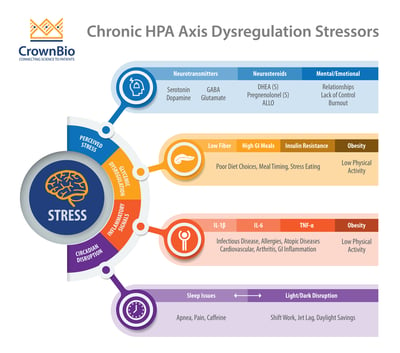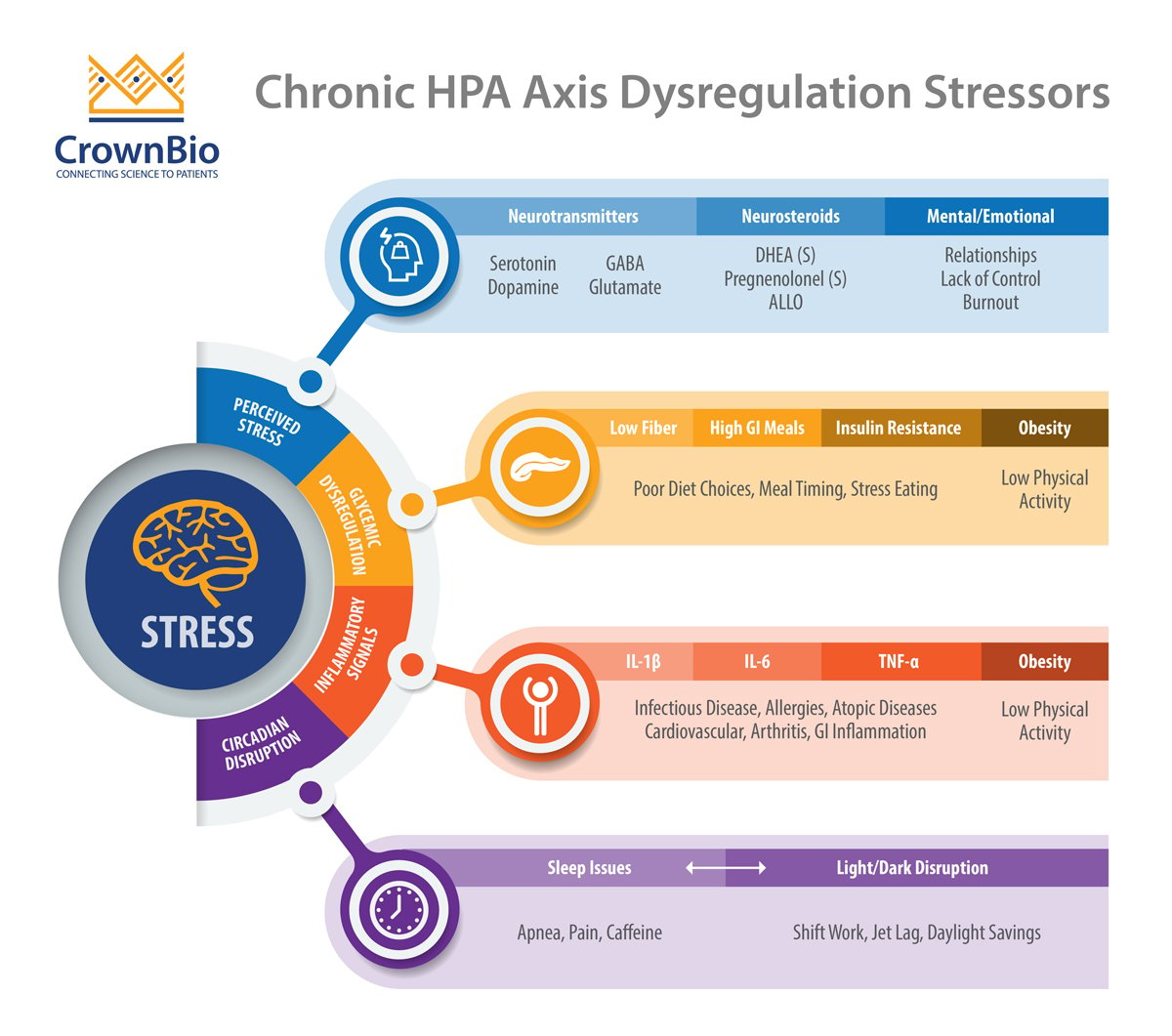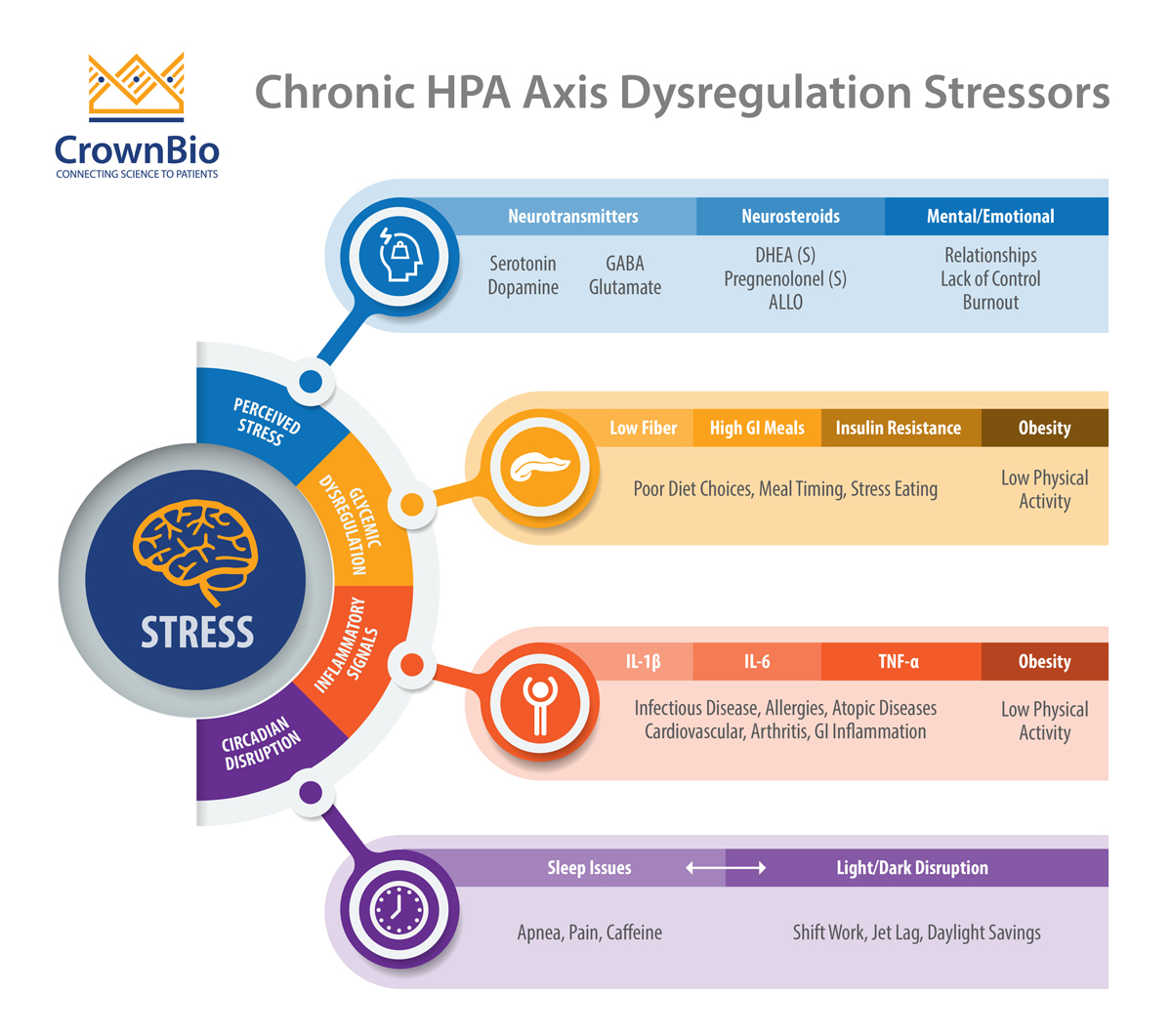 New research into our master “circadian clock” explains why your body responds differently to stress at different times of day.
New research into our master “circadian clock” explains why your body responds differently to stress at different times of day.
Hypothalamic-Pituitary-Adrenal Axis Stress Response
Have you ever wondered why the simplest problems or mild stressors seem ten times worse in the middle of the night? Scientists have, and a team of researchers from Japan's Hokkaido University set out to learn why.
Published recently in the journal Neuropsychopharmacology, medical physiologist Yujiro Yamanaka and his colleagues studied 27 young, healthy volunteers with normal work hours and sleep habits. They found that the hypothalamic-pituitary-adrenal axis (HPA, or the “fight or flight” axis) responds differently to acute psychological stress according to the time of day.
The HPA axis connects the body’s central nervous and endocrine systems. Cortisol is the primary stress hormone in humans and is released for several hours when the HPA axis is activated by a stressful event. This provides the body with energy in the face of a perceived need for fight or flight.
Cortisol levels are also regulated by a master circadian clock in the brain. They are normally high in the morning and low in the evening. This means that each person’s body can respond to a morning stress event because they have higher cortisol levels. But in the evening, the body lacks response to stress events, suggesting a greater vulnerability to stress later in the day.
Your Master Circadian Clock
Your internal master circadian clock also orchestrates many physical functions, such as when to go to sleep, when to wake up, when to eat, etc. People tend to have an innate preference towards waking early or going to bed late, which can also impact on other aspects of their life.
A study out of the National Institute for Health and Welfare at the Department of Public Health Solutions in Helsinki, Finland, shows that evening-type people have less favorable eating habits. This can put them at a higher risk for obesity, diabetes, and heart disease.
Data from nearly 2,000 randomly chosen people were studied to determine if their circadian clock affected what they ate and when. Evening types ate less protein overall and ate more sucrose in the morning. In the evening, they ate more sucrose, fat, and saturated fatty acids.
Moreover, a team of researchers from Northumbria University at Newcastle found evidence in cross sectional studies linking conditions such as heart disease and type 2 diabetes to people or “night owls” with a natural preference for evenings.
These preferences vary during different parts of the life cycle. Consider newborns and young children -- early risers, hence the multitude of cartoons on Saturday’s at 5am. During puberty it shifts towards an evening preference, with teenagers up all night and sleeping till noon. This evening preference continues through adulthood and then gradually reverts to “early to bed, early to rise” for senior citizens.
Perhaps this shows that the body knows best when good eating habits are needed most for better health. A closer look at more studies are needed to define the marriage between people’s master clock and their long-term dietary habits and health.
When the Circadian Clock Breaks
Sleep disruptions are associated with many brain disorders, including anxiety, dementia, and traumatic brain injury. The studies presented at Neuroscience 2018 focused on integrated functions maintained by the hypothalamus, which includes the regulation of wake-sleep cycles. Regulating circadian rhythms may prevent or treat diseases, including Alzheimer's disease and anxiety disorders.





